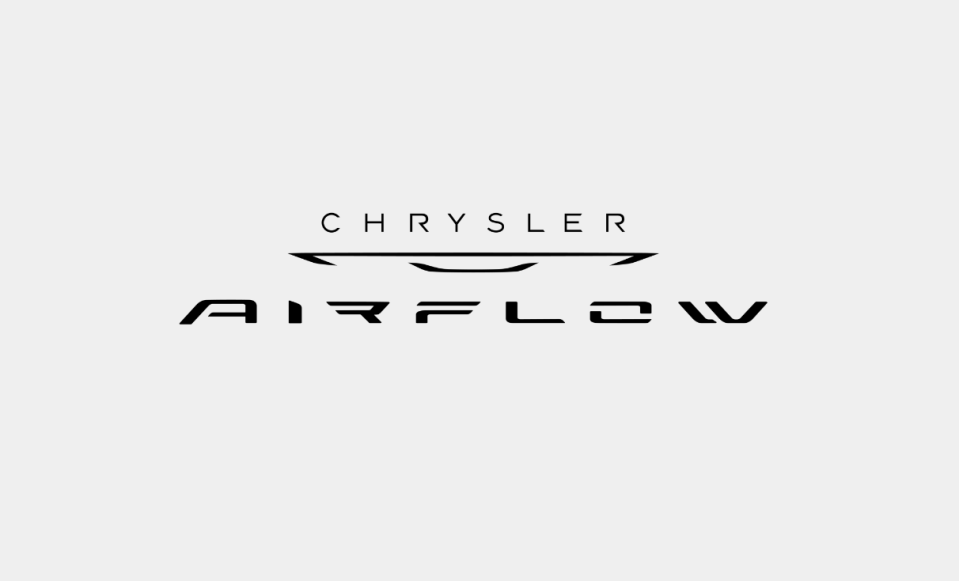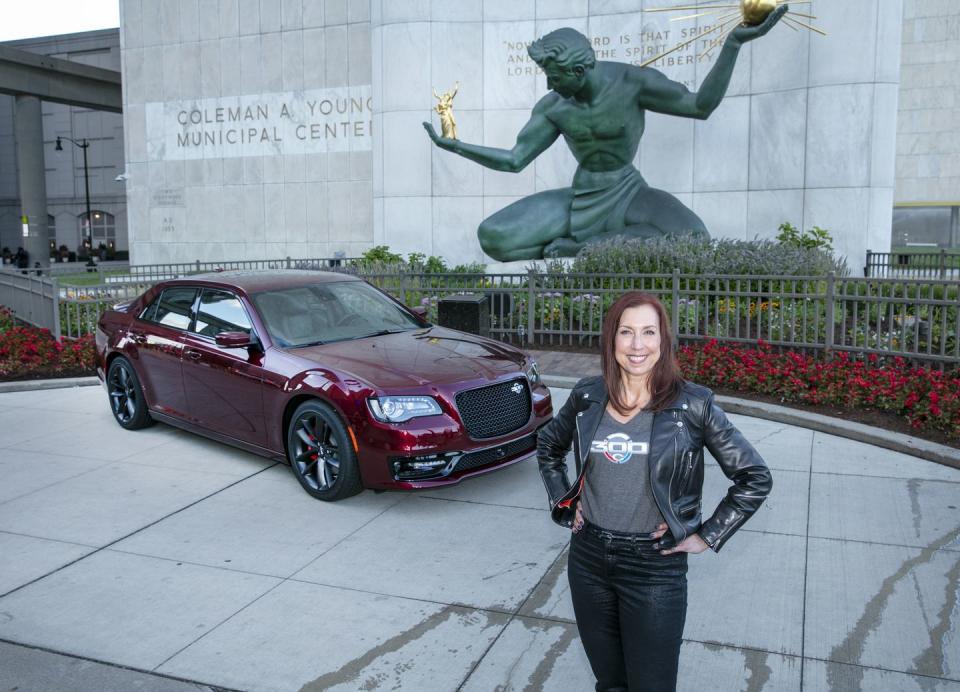Is Chrysler Heading in Wrong Direction with Its Halcyon EV Concept?

Chrysler’s all-electric Halcyon concept is dramatic, with a sleek interior and a steering column that retracts for autonomous-driving mode. With lithium-sulfur batteries, the Halcyon is designed to refuel while rolling along a high-tech road equipped for inductive charging.
Based on styling alone, the Halcyon will not be confused with the Chrysler EV crossover expected to debut in production form late this year, going on sale next year. But that production crossover won’t bear the name of the Chrysler Airflow concept.
Even with just the Pacifica and the recently discontinued 300, a Chrysler exec says the brand is profitable, with new vehicles “launching in quick succession,” likely to include an electric minivan.
Auto industry skeptics might look at Chrysler and see a storied brand living on borrowed time.
With the departure of the 300 sedan, the Pacifica minivan is the only Chrysler available in showrooms, at a time when most shoppers who could use a minivan are picking crossovers or SUVs instead. Meanwhile, helping pay the bills is the Chrysler Voyager, a rebadged Pacifica sold only to fleets.
So an invitation to Stellantis’ Auburn Hills tech center to see a concept car that represents the Chrysler brand’s “vision of tomorrow” should be cause for optimism. Could we see a production version of the Chrysler Airflow Concept, which is expected in production within a year as Chrysler targets 2028 for a “full lineup” of battery-electric vehicles, exclusively?

Not quite. Instead, we see the Halcyon concept in all its eye-candy glory. It’s dramatic, low-slung, big-wheeled, and aerodynamic, with a sleek interior to match. The rear seats retract into the trunk area, providing a new interpretation of Chrysler’s brilliant Stow ‘n Go minivan seating.
The steering column retracts for autonomous-driving mode, and headroom in the second row is compromised by a coupe-like roofline. It doesn’t appear to have much space for cargo (especially if the second-row seats are stowed).
Powertrain details for the Halcyon are scarce—for instance, range, battery capacity, and horsepower/torque specs are not disclosed. But we know it’s all-electric and a video suggests it can refuel while the Halcyon is rolling along a high-tech road equipped for inductive charging (a technology Stellantis says it has been working on for a few years).
Is there a solid business case for mobile inductive charging? Perhaps many years in the future, although Detroit is now testing the technology on a very, very short street (with plates in the pavement) near Michigan Central, the former train station Ford is renovating as a technology development hub.
Based on its outward appearance and the infancy stage for inductive charging and autonomous personal cars, it is safe to say the Halcyon is less than practical (riding a mere four inches off the road) and not expected to reach a production line anytime soon.
The Halcyon is also supposed to use lithium-sulfur batteries that require no cobalt, nickel, or manganese and can DC fast charge to the tune of 200 miles in five minutes. Another upside is a carbon footprint reduced by some 60%.
Halcyon Should Have Been at 2024 CES
But certain aspects of the Halcyon—like the illuminated, redesigned Chrysler winged logo on the hood, which looks nearly identical to the badge used to promote the Airflow crossover concept—could be ready fairly soon.
And there’s Active Aero Technology incorporating a sliding rear lower aero diffuser created from lightweight composite material.

Chrysler brand executives say the Halcyon was supposed to be revealed in January at the Consumer Electronics show, but parent company Stellantis withdrew its display and presentations at this year’s tech event in Las Vegas.
Based on styling alone, the Halcyon will not be confused with the all-electric Chrysler crossover that is expected to debut in production dress late this year, going on sale next year.
But don’t count on that production vehicle to bear the name of the Chrysler Airflow EV concept that was announced in 2020 and displayed in 2022.

“I can tell you with 100% certainty that the new product will not be called Airflow,” Feuell tells Autoweek. And, “It won’t be imported from Europe,” which could put tax incentives in play if the vehicle is assembled in the US.
That all-electric Chrysler crossover will spring from Stellantis’ STLA Large EV platform (as does this Halcyon concept). Feuell says the target remains in place for Chrysler’s first EV to achieve 400 miles of range fully charged.
“We will have a couple of different propulsion system variants—short range and long range,” she says. “And we’ll talk more about that when we’re ready to launch.”
Feuell wouldn’t say if the propulsion system of the coming EV will turn the front or rear wheels, or both. The STLA Large architecture is flexible enough for all three configurations.
That architecture is also billed as “multi-energy,” meaning it can accommodate internal-combustion, hybrid, and battery-electric powertrains, allowing the automaker to pivot based on consumer purchase trends.
Chrysler Is Profitable, Pursues ‘Multi-Energy’ Strategy
“The plug-in hybrid technology is really the best of both worlds,” she says. “It’s a no-compromise solution for those customers who want to dip their toe in the electrification technology field, but still have the backup of the internal-combustion engine as the PHEV battery runs out of range.”
How safe is the future of the Chrysler brand, and is it headed for the same fate as Plymouth, AMC, Mercury, Pontiac, Oldsmobile, Saturn, and dozens of other discontinued brands?
Surprisingly, even with just the Pacifica and the recently discontinued 300, Feuell says Chrysler as a brand is profitable on both a gross and net basis.

“We’ve grown the profitability exponentially since I took over the brand in 2021,” she says. “We have a really healthy cadence of new product-development launches, starting with the battery-electric vehicle launch in 2025.”
That will be followed by a refresh of the Pacifica “and some more new vehicles launching in quick succession after that.”
Chrysler pioneered the minivan segment with the Plymouth Voyager rolling out in November 1983, and the automaker has sold more than 15 million of these family haulers. So it makes sense that Chrysler plans to put an all-electric minivan on US roads.
“I did say that we are fully transforming our portfolio to be full battery-electric,” Feuell says. “So it certainly suggests that we will be coming out with a battery-electric minivan.” Whether Chrysler can be first to market with an electric minivan is in question: Volkswagen plans to launch its ID. Buzz toward the end of this year in the US.
But why does the Chrysler brand with just one vehicle offering—the Pacifica—spend its resources on a concept—the Halcyon—that Feuell admits incorporates technology that’s on the (perhaps distant) horizon?
“Not all of the features that you see here (on Halcyon) are things that will be immediately available,” she says. “But we know that these are features that overcome concerns and barriers that customers have in purchasing EVs.”
Do you expect a production vehicle reasonably close to the Halcyon concept will eventually come to market? Please comment below.

 Yahoo Autos
Yahoo Autos 